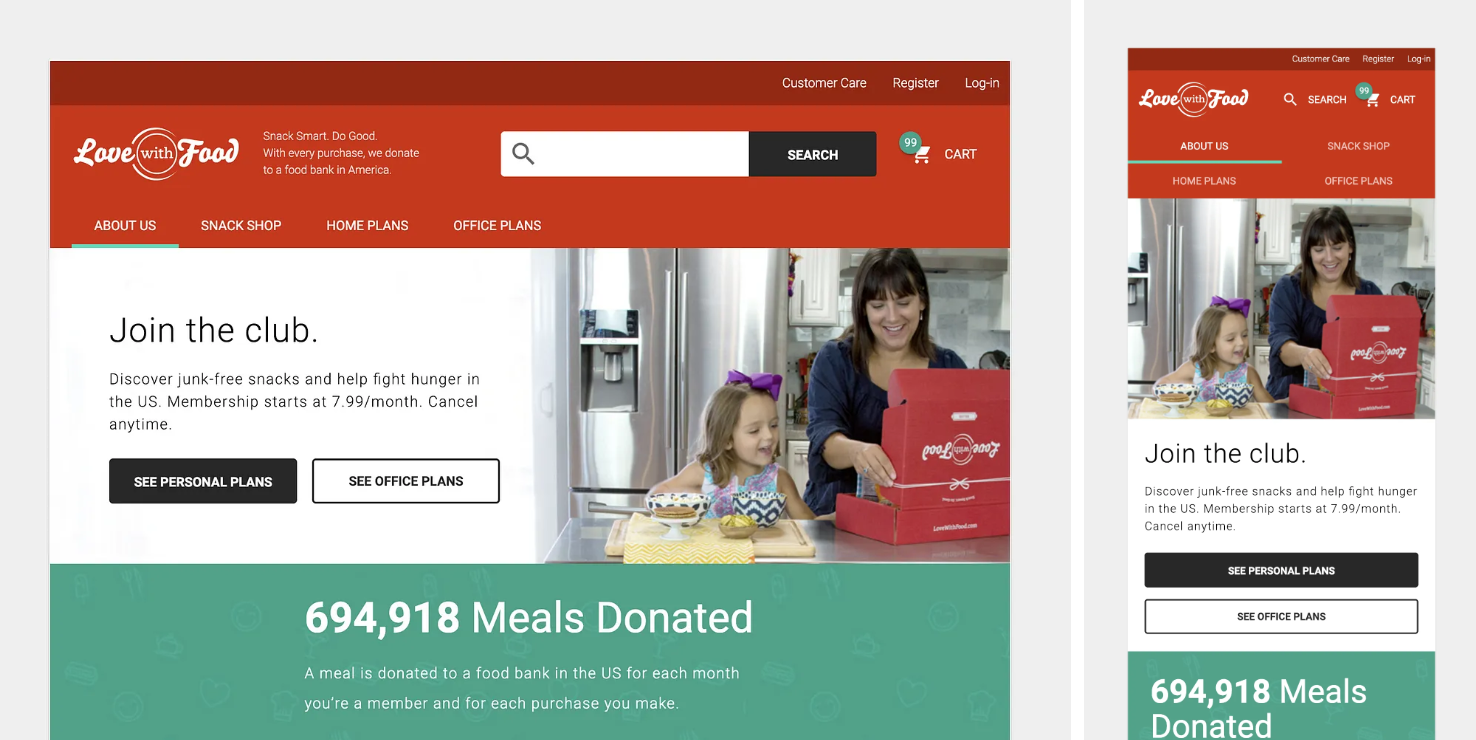
Finding the perfect rental car for your trip
Design Research Enables Company to Craft Engaging Campaigns

My career as a designer and technologist began at 16, with the development of the independent video game Efencea. Self-taught following my early graduation from high school, my 15 years of industry experience have included diverse roles, such as developing B2B healthcare technology and DTC hardware for pets.

Design Research Enables Company to Craft Engaging Campaigns
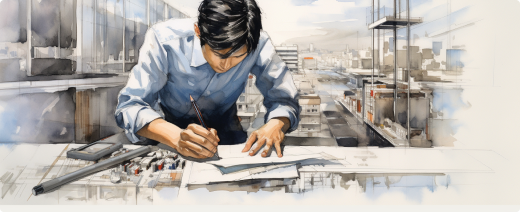
Leveraging Generative Design Tech for Industrialized Construction

Developing a Profitable Software Roadmap for an Electronics Company
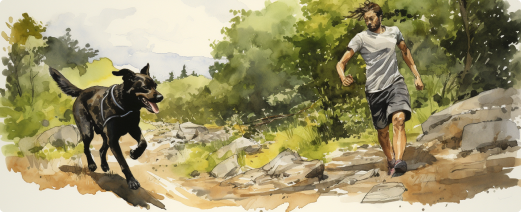
Uncovering Insights to Drive Growth for Wearable Tech Products in Pet Care
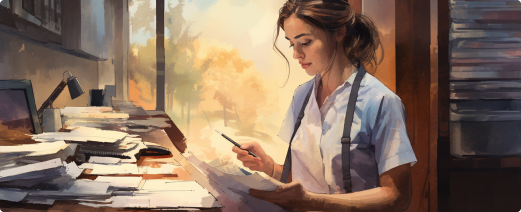
Healthcare Solutions Provider Leverages Human-centered Design Org-wide
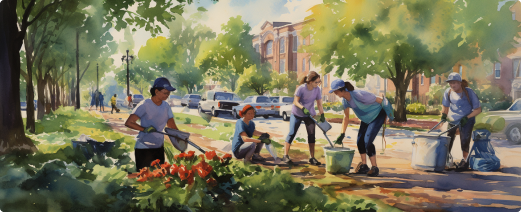
The City of Philadelphia Works Toward Accessible Open Data
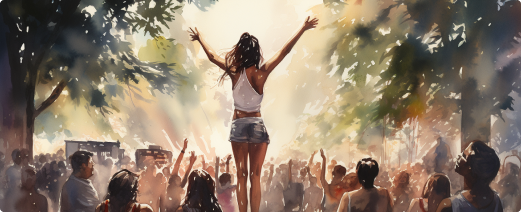
Event Operations Company Enters Adjacent Market with Digital Product

Design Leads to 60% Increase in Sign-Ups for Snack Subscription Service
Because of his tenacity, and attention to detail, we were able to take an enterprise application from ideation to release in under 6 months.
He is very engaging, approachable, and we trusted him to interview our customers on our behalf to get a true unbiased voice-of-the-customer
Miguel is a strong visionary with tremendous intelligence and high EQ. His passion and curiosity are contagious and energizing
His enthusiasm and high energy got everyone so excited to come to work everyday to help to further achieve our team goals
Miguel is a transformative force multiplier, who is able to guide through vision, tactical execution, and a personal example of what is possible
Miguel's eagerness to jump in, connect with users, evaluate their needs and ensure that the product solves their biggest problems is useful for businesses at any stage

Design Research Enables Car-Sharing Company to Craft Engaging Campaigns
Design research proved to be essential for the success of a car-sharing company's marketing strategy. By conducting online multivariant tests and listening sessions with target audiences, we identified key insights that allowed the team to develop creative briefs and establish a repeatable methodology for evaluating future marketing campaigns.
I led the team in identifying essential insights that allowed the car-sharing company to develop more engaging, resonant campaigns through generative and evaluative methods. The research began with an online multivariant test that measured the previous campaign's appeal, relevance, clarity, and fit. Then, I led listening sessions with participants representing the company's target audience. We found that for most travelers, finding a car that is the right size is more important than the luxury features of the vehicle. Furthermore, last-minute reservation changes and vague car descriptions on rental websites restrict customers' ability to choose precisely which car they rent.
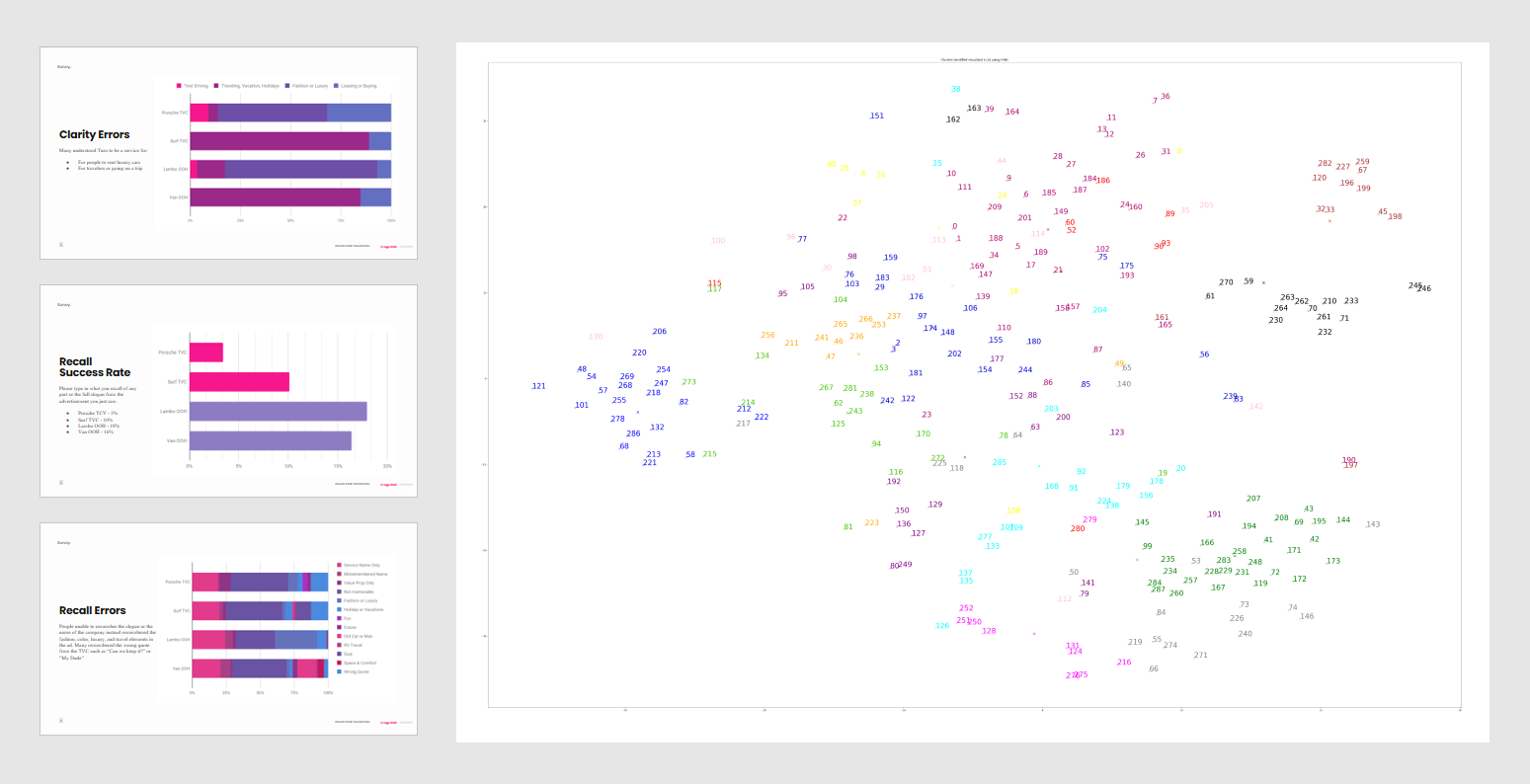
Armed with this research, we produced a creative brief for the car-sharing company's art team that was human-centered and data-informed. Through the project, I established a repeatable methodology for evaluating new marketing campaigns, so the company can continue to develop its brand in ways that resonate with its target audience.

Leveraging Generative Design Technology for Industrialized Construction
My team coded audio recordings of interviews to identify and storyboard how construction engineers and architects could leverage AI techniques in their current workflows. The team then proceeded to co-create future state scenarios to prototype the user experience, eventually creating wireframes and illustrations which provided a clear vision of the potential of their design technology.

In today's construction market, firms are challenged to explore new and innovative ways to design modular homes. This need has led to a demand for generative design tools. A leading design software provider faced this challenge and needed a way to leverage its breakthroughs in AI to help architects develop modular designs for industrialized construction. By the end of the project, the team realized a strategic opportunity to integrate the new features within the existing application of a recently acquired platform.
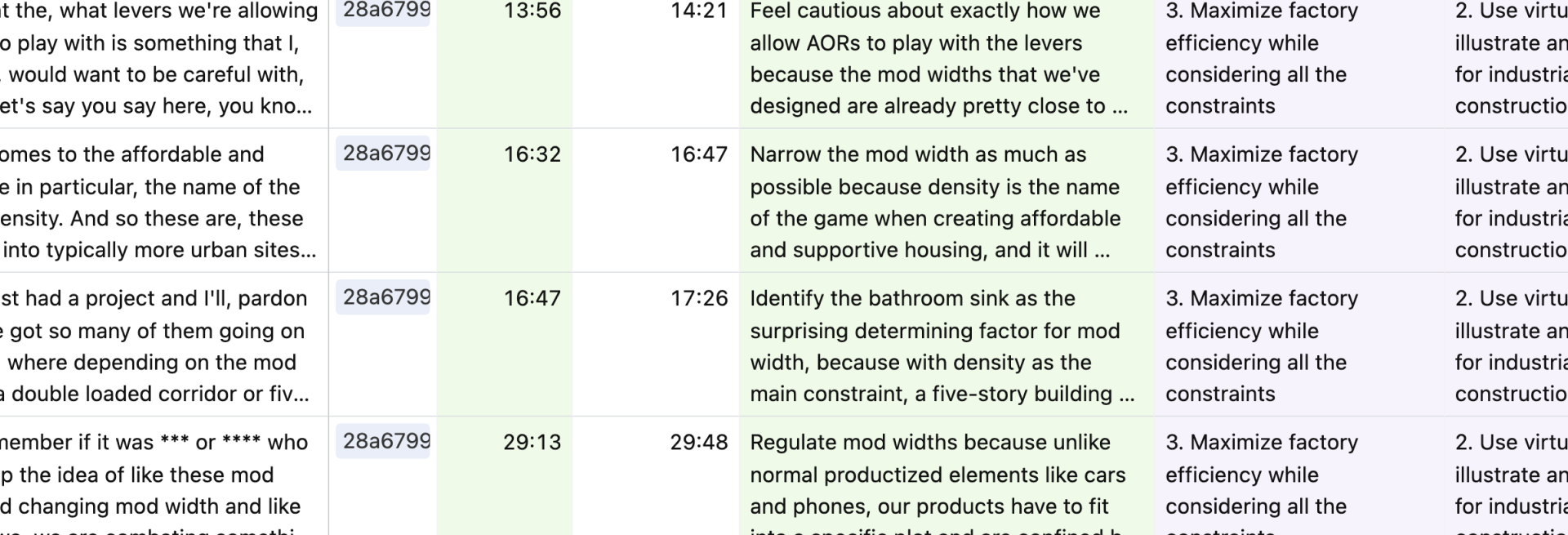
I started the project by virtually heading back to the floor of the industrialized construction factory through audio recordings of interviews conducted by the client. I then coded, categorized, and identified themes to understand the construction engineers' needs at the level of specificity required for designing new user interfaces. With this research, I created a storyboard of the current state and allowed the team to identify where their technological advances could fit into existing workflows.

I led the team in brainstorming future state scenarios to prototype the user experience in low fidelity. After gaining alignment, I moved the team to a higher level of fidelity by creating wireframes and illustrating the future state scenario. As a team, we created a clear vision of the future grounded in the real needs of architects combined with the extraordinary potential of their design technology product.
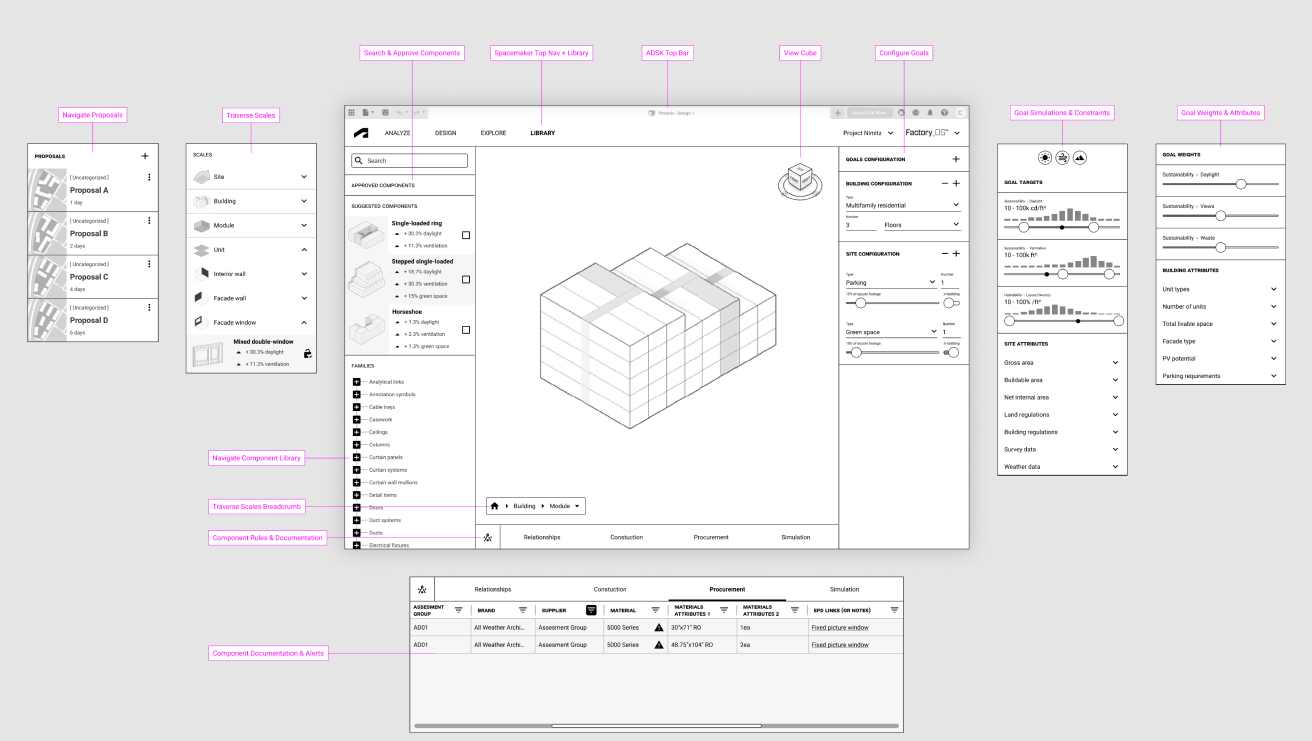

Developing a Profitable Software Roadmap for an Electronics Company
An electronics distribution company hired me to develop a software development roadmap for the coming year. My team and I interviewed stakeholders, discovered personas, and created journey maps and user interface prototypes linked to an Atomic Research Repository. We identified design opportunities and co-created a product roadmap with executive leadership to improve the customer experience and drive profitability through automation and self-service.
The electronics distribution company wanted to improve the customer experience and drive profitability through automation and self-service. The big challenge was to avoid the trap of building tools that saw no adoption and didn't add value to customers. I was hired to work with the internal IT team and the company's clients to create a software development roadmap for the coming year. In 90 days, I uncovered eight ways to drive profitability by developing new software applications. As a result, the company was able to prioritize investment into automation and align on a software development roadmap for the coming year. The output of this project included an Atomic Research Repository with over 1,600 observations and 50+ insights about the customer experience, co-created personas, journey maps, and prototypes.
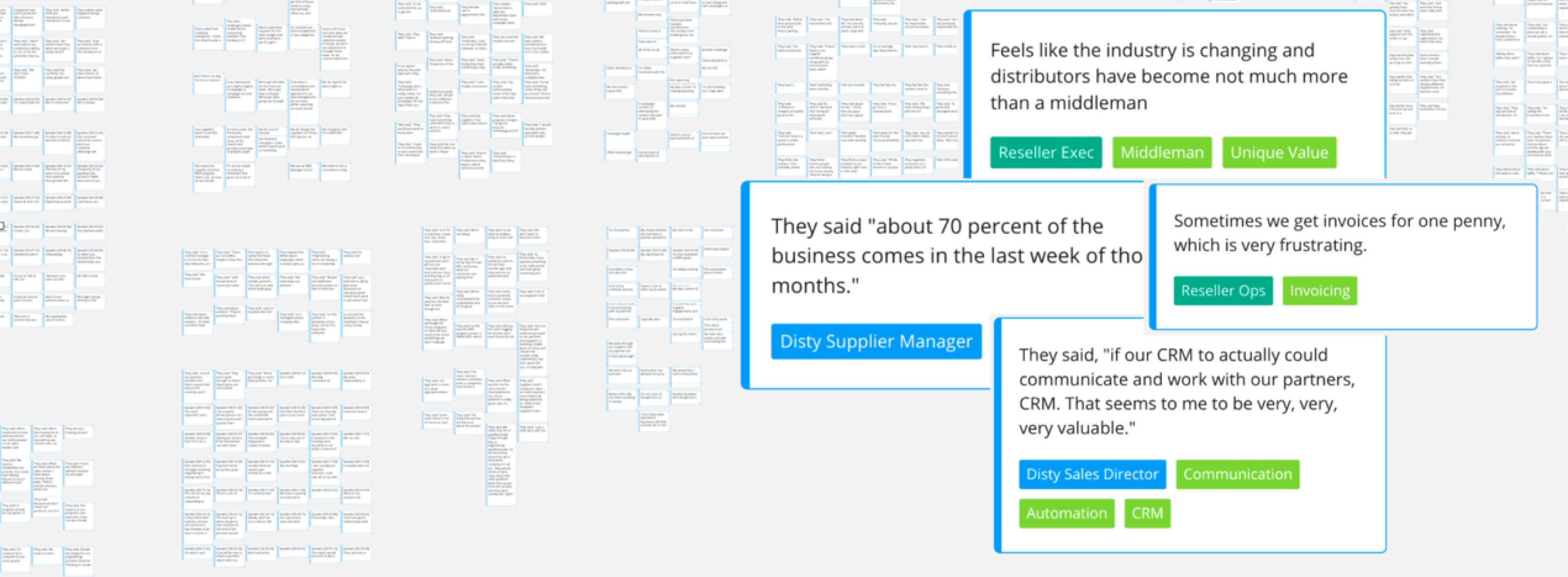
I started by interviewing project stakeholders to get up to speed on the goals, roles, business, and landscape. I then facilitated co-creation sessions to generate an Innovator’s Compass and broader stakeholder map. Next, I conducted more interviews with account executives to map out our internal assumptions and build trust with those responsible for customer relationships. Then, to learn more about the customers, I visited them onsite. I talked to them about their experiences, recording conversations and learning about their needs by co-creating journey maps on a whiteboard. I transcribed the interviews to make finding and sharing themes from the design research easier. Next, I created an Atomic Research Repository in AirTable. Based on the data, I generated a user journey map and personas to help facilitate in-person ideation workshops with internal stakeholders spanning teams like Sales, IT, Finance, Ops, Marketing, and Engineering.
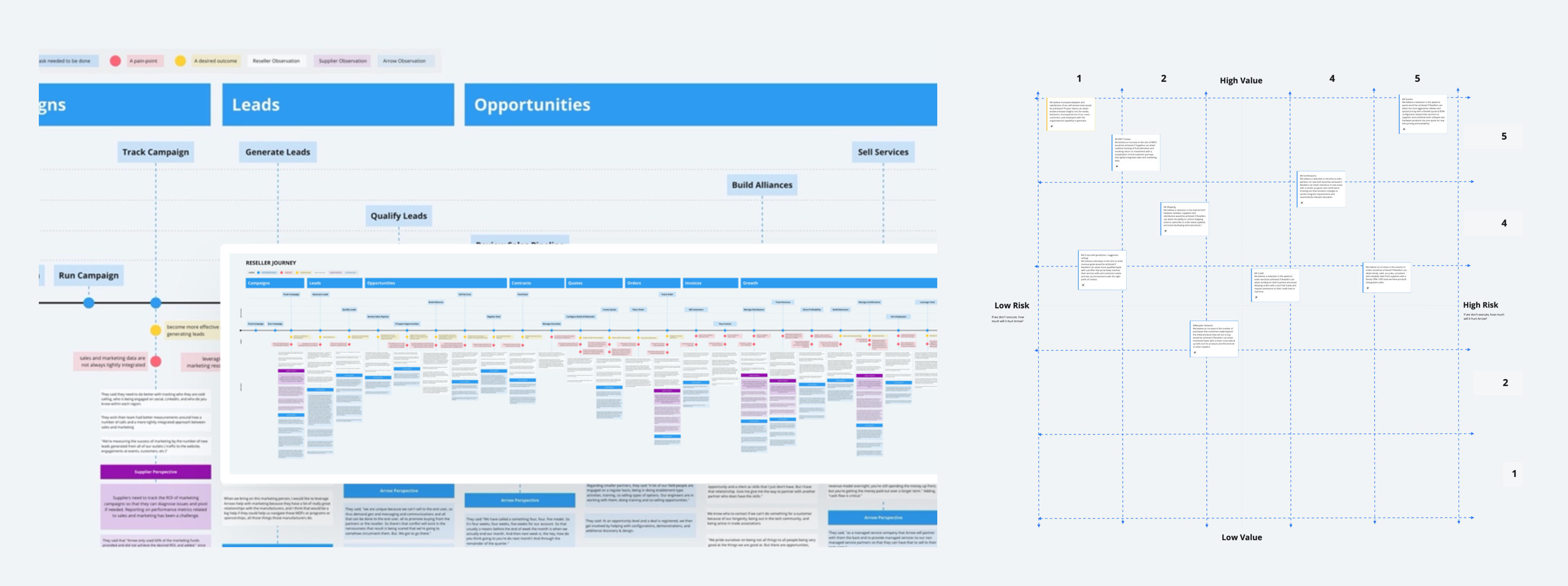
To complete the roadmap, I identified themes from the ideation workshop. Next, I defined design opportunities for the core team to prioritize based on risk and value. I then co-created a vision for the product with executive leadership by having one-on-one conversations aided by speculative UI designs. This process enabled us to define a product roadmap across multiple parts of the organization.


Uncovering Insights to Drive Growth for Wearable Tech Products in Pet Care
Through interviews with dog owners, loyal customers, and post-checkout intercepts, my team identified flight-risk animals as the most likely customer segment to become loyal customers of a smart dog collar product. With this research, my team discovered new personas, value propositions, and data-backed strategies for the product's growth, including a new homepage and marketing campaign.
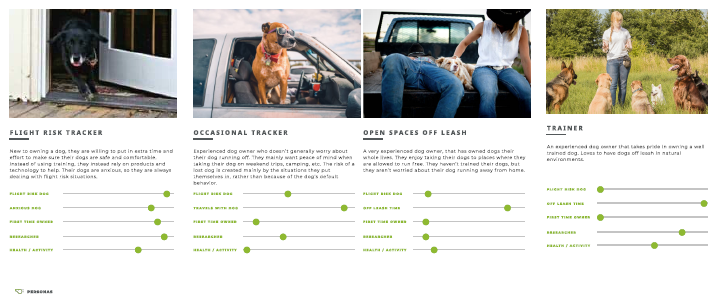
After acquiring a company that developed Smart Dog Collars, a multinational corporation needed help gaining an in-depth understanding of the product, customer base, and market. To build this understanding, my company was hired to help get the new management up to speed. The results of our work enabled the team to quickly understand their customers and develop a roadmap to drive growth.
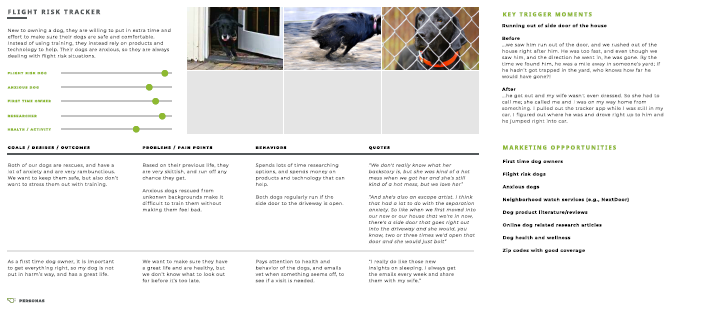
My team and I interviewed dog owners to understand their needs and how well they aligned with the product's existing offering. We also identified and interviewed the company's most loyal customers to better understand what drives retention. Finally, we ran intercepts post-checkout to triangulate why customers decided to purchase the product when they did. We then analyzed the opportunity gaps to prioritize customer needs and refine the product's backlog. This included a new homepage and marketing campaign designed around the needs of flight-risk animals beyond dog owners.

Healthcare Solutions Provider Leverages Human-centered Design Org-wide
Through interviews, workshops, and surveys, my team understood the needs of a data-driven healthcare solutions provider, attracted world-class talent to the Design Center of Excellence, reduced operational costs by 60%, saved $2.4 million in code rewrites, and built internal capacities for innovation.

The leading data-driven healthcare solutions provider urgently needed to transition design work in-house. So I was hired to lead the founding of a Design Center of Excellence and set up the processes, teams, and tools necessary to make it happen. Through this process, we transitioned UX and UI design in-house and certified 20+ design practitioners in human-centered design. As a result, in 1 year, we reduced the run rate of the design team and designed a training program for cohorts of 20 new team members per quarter.
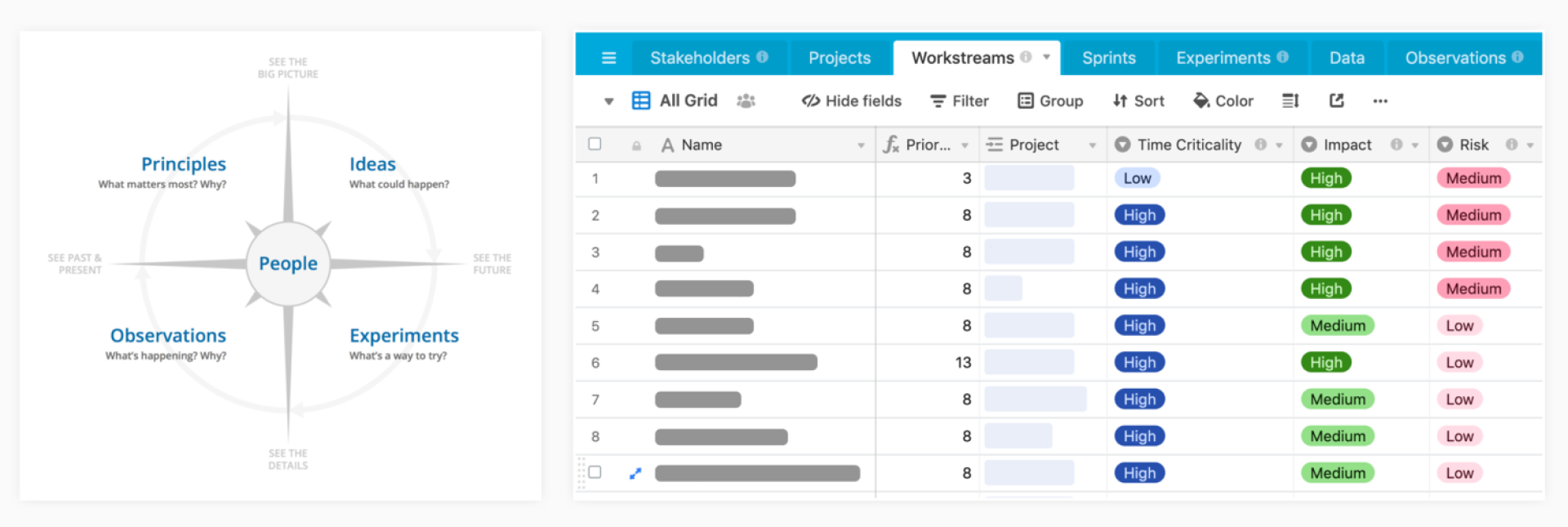
To launch the Design Center of Excellence, I interviewed product and engineering leads on each team to better understand how they used design agencies, what they liked about their process, and what challenges they faced. Then, I became the primary vendor manager to prevent rework and waste better. We adopted the Innovator's Compass and ran subsequent workshops to map the goals and concerns of each team. Our flexible process allowed us to assist any development team regardless of where they were in their product development life cycle. To support the design process, I configured AirTable to document the design workstreams, stakeholders, and experiments, laying the groundwork for an Atomic Research Repository. I also ran a monthly prioritization meeting with leadership to ensure we would stay within budget and build awareness around the growing need for design integration.

To build the team, I wrote job descriptions for the new team and worked with HR to run a compensation analysis for the new roles. I set the stage for what equipment and job benefits would be required to attract world-class talent. I took a grassroots strategy of developing the design mindset among product managers and letting them decide when to best hire someone on their team to assume the full-time designer role.
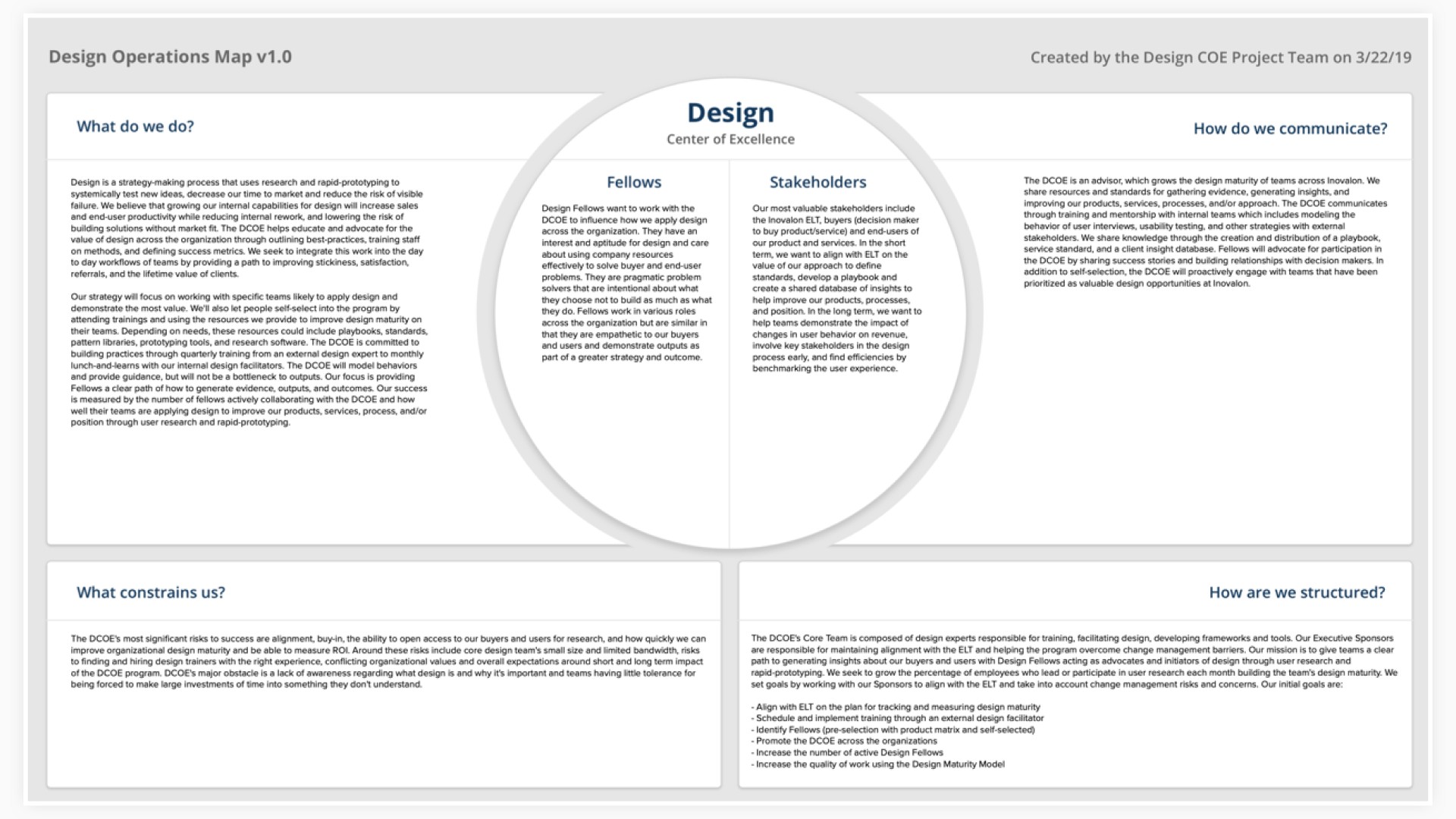
Next, I ran a workshop to facilitate alignment around each business unit's needs and our design program's goals. I also ran a survey based on DMI's design maturity framework to identify bright spots in the organization and help us find early adopters of human-centered design. Next, my team created a matrix of products to determine which groups were well-positioned to make an immediate impact using human-centered design. The Design Center of Excellence proved to be a great success. By understanding the needs of each team, establishing solid processes and tools, and involving stakeholders at all levels, we built innovation capacities and positively impacted the organization.
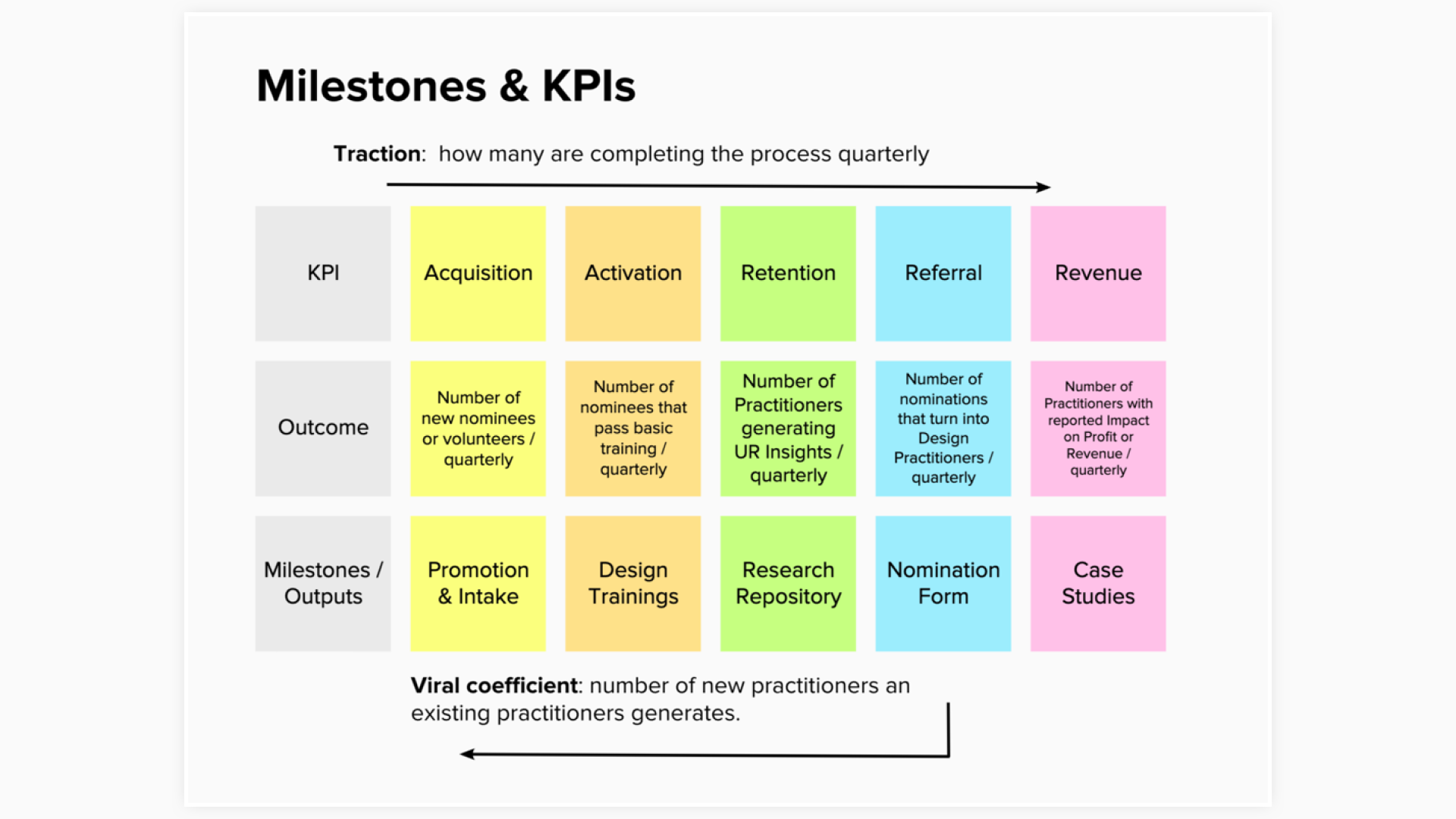

The City of Philadelphia works toward a More Accessible Open Data Portal
I interviewed open data consumers, ran usability studies, and held ideation workshops with stakeholders to design an open data portal that meets the needs of data analysts and community leaders. A press conference was held to share the project's learnings and findings, and I shared speculative user interfaces to make the results easier to share and socialize.
I was hired to use my design research and technology background to help the City of Philadelphia develop a better open data portal through a design fellowship program. In 3 months, I helped the team uncover key ways of removing bottlenecks to available data access via community organizing and a self-service open data marketplace.
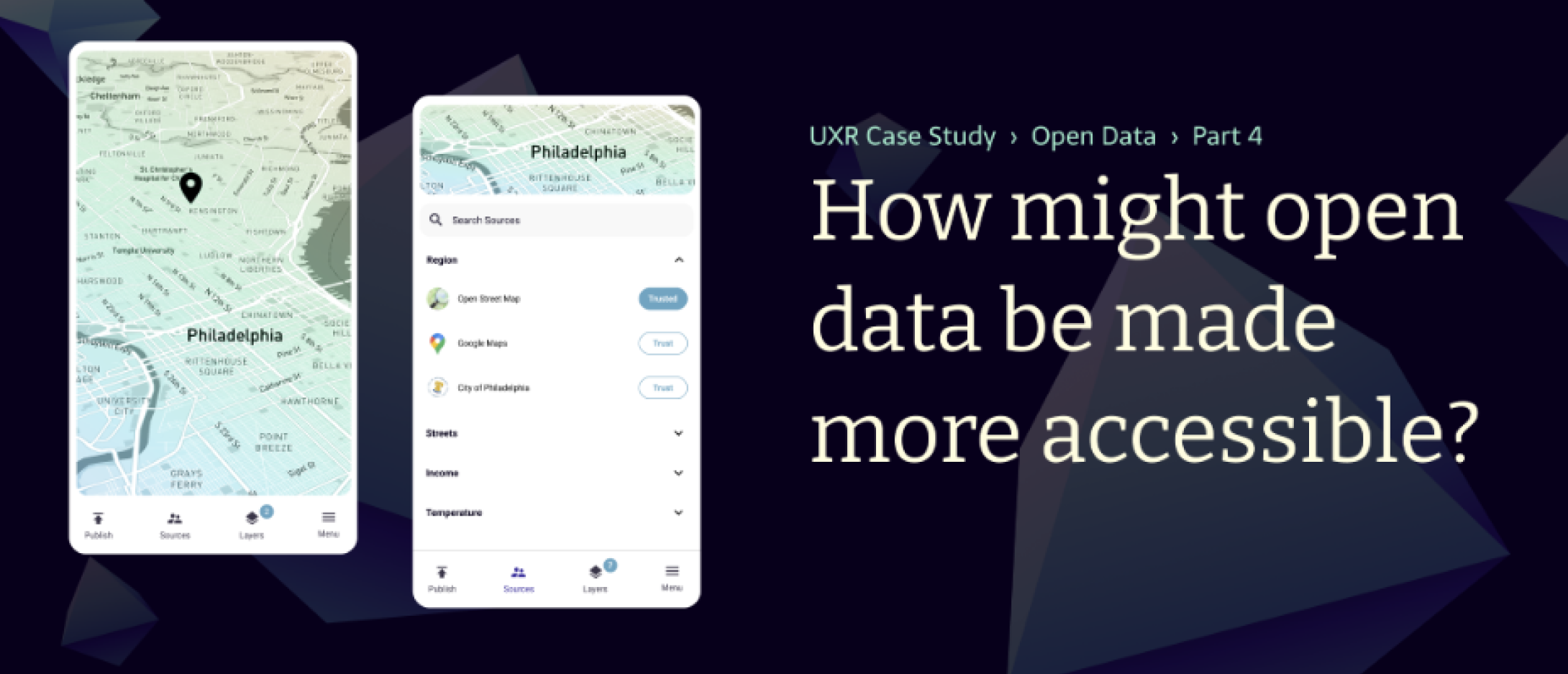
First, I reviewed past research and other cities' design efforts to develop open portals. Second, I interviewed existing consumers of Open data, including community leaders, advocates, RCOs, journalists, data analysts, academics, researchers, and civic hackers. Third, I ran usability studies with interview participants on the existing data portals. Finally, I facilitated ideation workshops with stakeholders to align on the findings and explore possible solutions. Both data analysts and community leaders expected mapping tools to let them query for specific data points of interest. Mapping data points geographically grounds the concept of open data for those unfamiliar with its utility or lacking the technical know-how to explore it currently. Less tech-savvy participants expected interactive tools and needed help finding the required data within available channels. Allowing users to add map layers will enable them to request data without knowing which dataset it might be in. Capturing demand this way will let us see trends in the most desired data.
Toward the end of the fellowship, I discussed the project's learnings and findings at a press conference to benefit the public and other internal teams. We learned that we could create value for data analysts and community leaders by designing a portal that serves the needs of those who lie anywhere in the spectrum of data literacy and civic engagement. Data analysts will need to be able to find and link datasets, evaluate data quality, and download it for use. Community leaders will expect to see mapping tools that visualize relevant data points. Both groups would benefit from a mechanism for requesting new data from anyone who might have it. Finally, I prototyped user interfaces to make the results of the work easier to share and socialize.

Event Operations Company Enters Adjacent Market with Digital Product
An event operations company looking to enter an adjacent market hired me as a lead product designer to develop a digital product for traveling music fans. Through workshops, design research, and brainstorming sessions, I created interactive personas, developed an MVP, and measured traction. As a result, the company was successfully acquired by a more prominent firm in the same industry.

An event operations company focusing on providing an enhanced experience for music fans attending festivals had an opportunity to enter an adjacent market. They hired me as the lead product designer to help them seize this opportunity by developing a digital product targeted at people who travel to music festivals. The project results helped the team pivot away from building features that benefit other event operations people and shift to focus on the needs of traveling music fans.
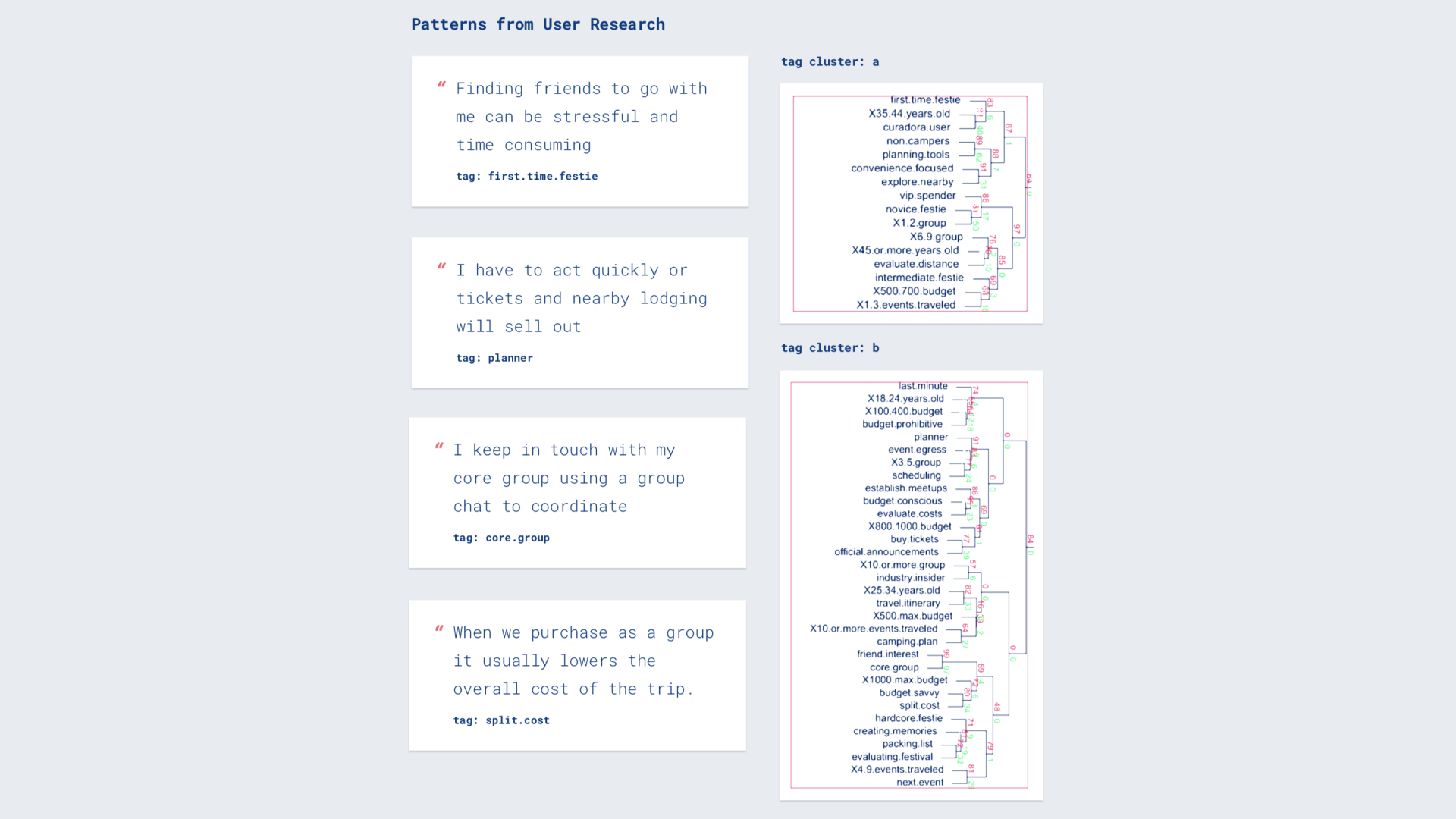
I facilitated workshops with the stakeholders to align the team around a shared set of product goals. A business model was then drafted, which could be iterated on as patterns emerged from design research. I then invited everyone to participate directly in the study to build empathy by interacting face-to-face with prospective users. Through coding, categorization, and clustering techniques, I created interactive personas that could be used to inform product behavior. I also ran brainstorming games with the team—games anyone could participate in, regardless of their artistic abilities. This egalitarian approach empowered everyone and helped the team bring their best ideas to those with the most potential to impact their project goals.
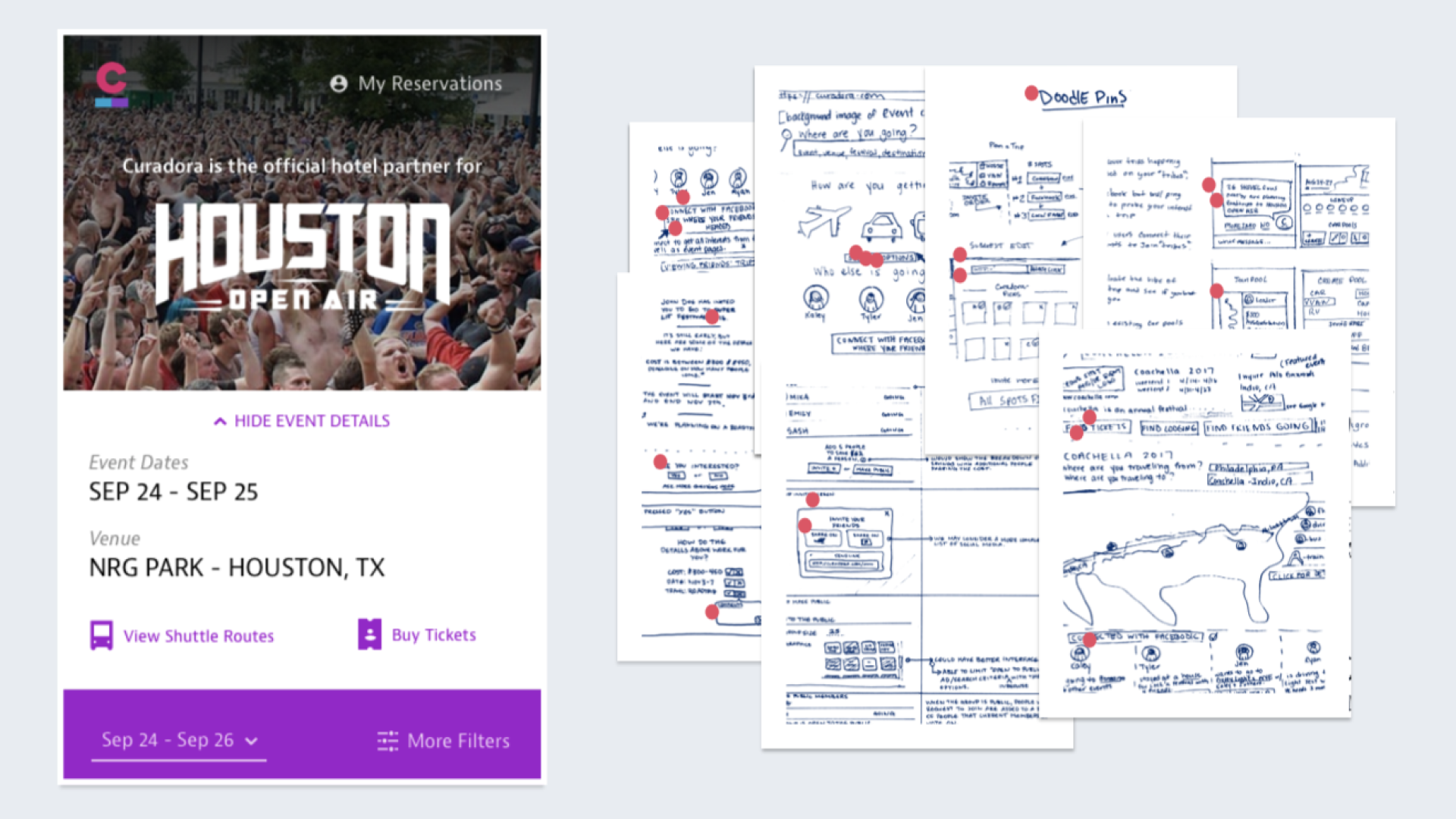
Using the insights gathered from the research, the team developed an MVP that could convert prospective users into customers. The company was successfully acquired by a more prominent firm in the same industry. In addition, the project demonstrated that the company could develop innovative digital products aligned to the needs of traveling music fans and show traction with users.

UX Design Leads to 60% Increase in Sign-Ups for Snack Subscription Service
Through interviews, questionnaires, watch parties, and usability studies, my team identified and made site changes that resulted in a 60% lift in sign-up conversions for an online snack subscription. Additionally, we developed a design system that allowed the engineers to iterate and quickly redesign the site.

A service in the food industry had been selling subscriptions for years and wanted to undergo a responsive web redesign. I was hired as a UX Designer & Front-end Developer and tasked with creating a new homepage that made it easier for new visitors to understand the benefits of becoming a member. We found a few significant changes to the site that led to a 60% lift in sign-up conversions through A/B testing.
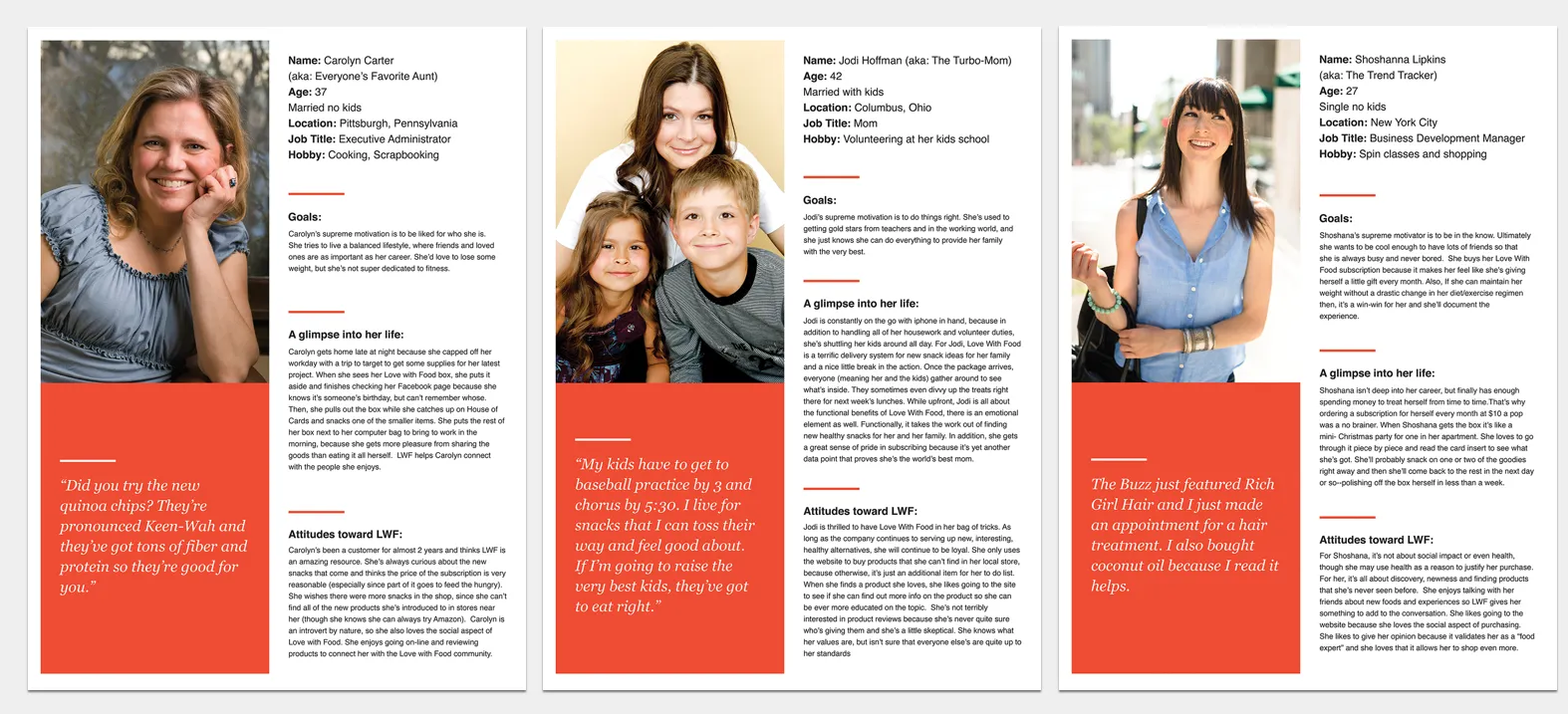
To begin, I interviewed the team's subject matter experts. Next, I extracted highlights to share with the team to ensure I had identified the correct problems before narrowing in on a solution. Then, I developed a questionnaire for their members to understand the attributes that differentiated the company's segments and, more precisely, target recruit participants for user interviews. After the discussions, I organized a watch party to collaborate and make sense of my team's observations. To make the most of the client's time, I led alignment-building activities asynchronously, using playlists to guide the team's collaboration. Finally, we met to converge on solutions and inspire iteration rounds.
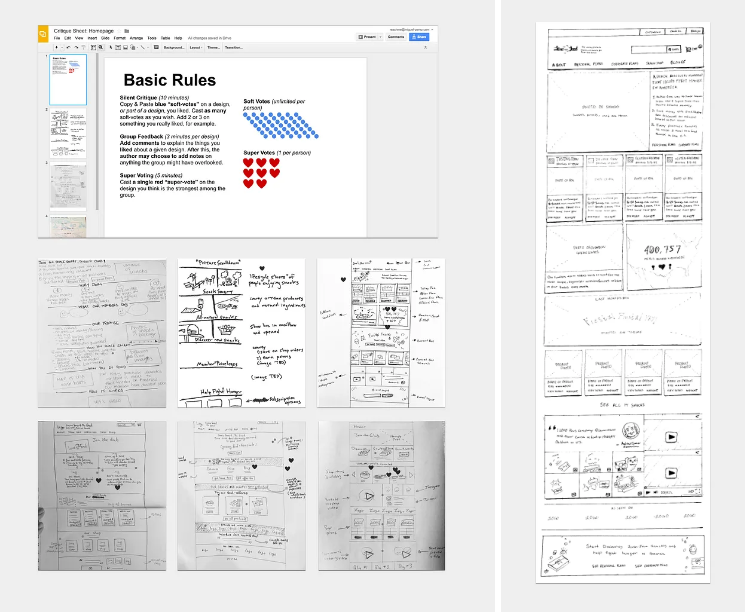
I then created a high-fidelity prototype of the site and tested the design with unmoderated usability studies. After a few iterations, the team was happy with the results, and I moved on to building out the front end. First, I broke down the new designs into reusable components to lower development costs over time. Next, I used a JavaScript templating language to make alternative options for each element and describe dependencies. Once the UI components were built, the engineers implemented them on the homepage. My work on the homepage resulted in a design system that allowed the engineers to iterate and redesign other parts of the site in only a few months.
